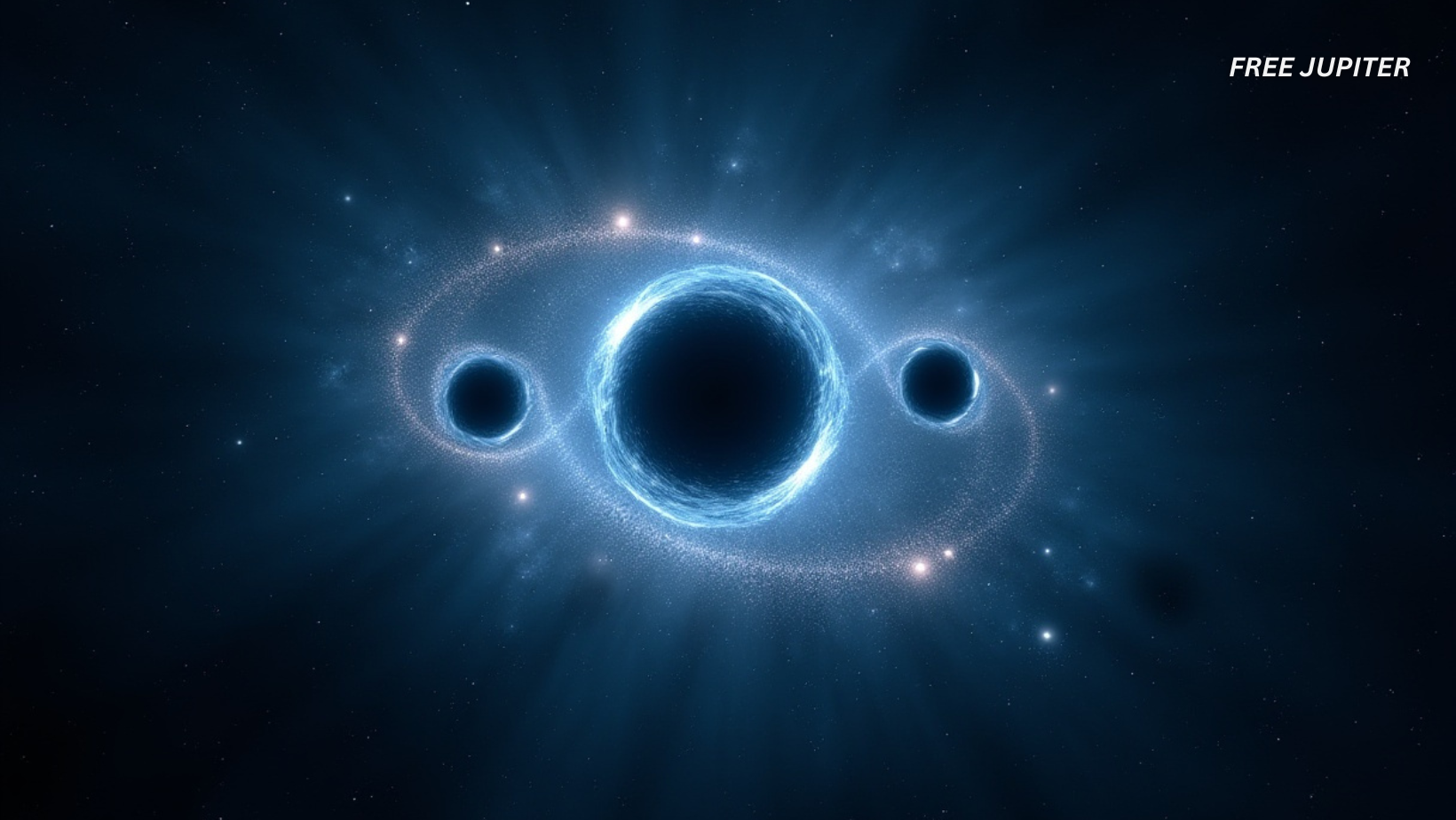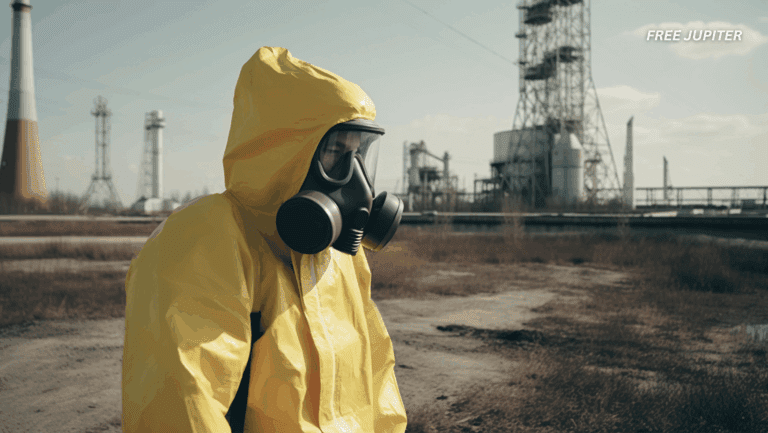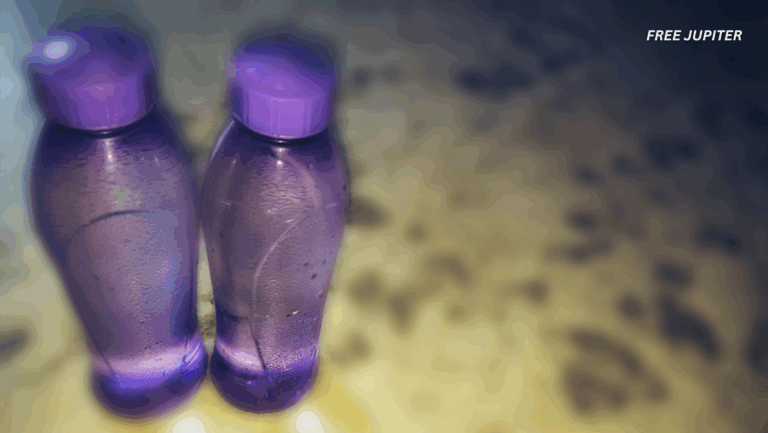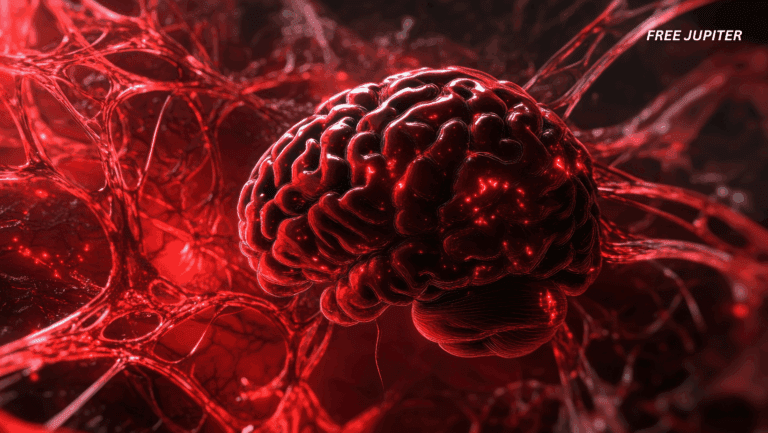Friendly Note: FreeJupiter.com shares general info for curious minds 🌟 Please fact-check all claims—and always check health matters with a professional 💙
Hidden in the vast shadows of distant galaxies, three enormous cosmic predators have revealed themselves—not through sight, but through sudden, spectacular outbursts of light. These powerful signals, captured in newly analyzed data from both Earth and space telescopes, are the unmistakable fingerprints of supermassive black holes swallowing entire stars.
This trio of celestial events, among the most energetic phenomena ever recorded since the Big Bang, sheds light—quite literally—on some of the darkest corners of the universe. According to a new peer-reviewed study published in Science Advances, the immense energy released by these violent encounters surpasses the output of over a hundred typical supernovae.
Silent Giants, Sudden Brightness
Ordinarily, black holes remain quiet and unobservable unless they happen to consume surrounding matter. Many lurk silently at the hearts of galaxies, inactive and undetectable until a fateful collision with a passing star ignites a burst of radiation.
In this latest research effort, scientists documented three such instances, where stars ranging from three to ten times the mass of our Sun ventured too close to these cosmic titans. What followed was a dramatic flare of high-energy light that persisted for months, painting the night sky with the echoes of destruction. These are not your average stellar deaths—they are cosmic cataclysms known as “extreme nuclear transients.”
“This is like finding a flashlight in the dark—one that only turns on when a star gets torn apart,” explained Jason Hinkle, a doctoral researcher at the University of Hawaii and the lead author of the new study.
Read more: The Strawberry Moon May Be the Most Potent And Powerful Full Moon of the Year
What Are Extreme Nuclear Transients?
This term, “extreme nuclear transients,” may sound like something out of a sci-fi thriller, but it describes a rare class of astrophysical events that mark the sudden and violent feeding of a dormant supermassive black hole. Unlike black holes that constantly consume gas and dust, these remain still until a star drifts too close. When that happens, the black hole’s gravity rips the star to shreds and transforms it into fuel.
The resulting radiation blast is not just powerful—it’s revealing. It offers astronomers a rare opportunity to study the otherwise invisible surroundings of galaxy cores. The intense energy from these events bathes their host galaxies in high-energy radiation, altering the environment and producing signatures detectable by observatories across the globe and in orbit.
“The ripple effects of these black hole meals go beyond the feast,” said Hinkle. “They tell us something about the galactic neighborhoods where they happen.”
Long-Lived Flares of Light
After a star is devoured, the energy output doesn’t just vanish. It takes more than 100 days for these events to reach their peak brightness, and over 150 days more to decline to half that luminosity. This extended timeline enables a wide range of telescopes to catch glimpses of the process at different stages.
Notably, the ultraviolet and X-ray light emitted during these events slowly fades, providing a signature that distinguishes them from other high-energy events like supernovae. The light’s evolution over time effectively serves as a diagnostic “print” of the cataclysmic event that unfolded.
Meet the Cosmic Culprits
One of these luminous events—affectionately nicknamed “Barbie” due to its catalog designation ZTF20abrbeie—was first noticed in 2020 by the Zwicky Transient Facility at Caltech’s Palomar Observatory. Barbie was studied in depth across two separate investigations published in 2023.
The remaining two events were traced back to discoveries made by the European Space Agency’s Gaia spacecraft in 2016 and 2018. While Gaia’s primary mission is to chart stars and galaxies, it also catches transient events, brief moments when a celestial object dramatically changes in brightness.
Read more: Physicists Finally Capture ‘Second Sound’ For The First Time – After Almost 100 Years Of Searching
Confirming the Culprits
To distinguish these events from supernovae or other explosive events, scientists turned to NASA’s Neil Gehrels Swift Observatory. Swift was designed to monitor high-energy cosmic occurrences in X-ray, ultraviolet, and optical bands. In this case, it played a pivotal role in confirming that the peculiar light curves were consistent with black holes devouring stars, not typical stellar deaths.
Each signature matched what researchers expected from tidal disruption events—when a black hole’s tidal forces tear a star apart, creating a disk of debris that glows brightly as it spirals inward.
Seeing in Infrared: WISE and Beyond
In addition to Swift’s contribution, data from NASA’s Wide-field Infrared Survey Explorer (WISE) proved vital in understanding the surrounding environment of these black holes. Although the WISE mission ended in 2011, it was reactivated as NEOWISE before its final retirement in 2024.
The spacecraft’s observations, especially in the infrared spectrum, revealed valuable insights about the dust and gas near the black holes. Infrared light is particularly useful for peering through cosmic dust clouds, which often obscure optical views of the galactic core.
Other ground-based telescopes added layers of confirmation. These include the Keck Observatory in Hawaii, the Catalina Real-Time Transient Survey, the Pan-STARRS project, and the ATLAS network.
The Bigger Picture: Why These Events Matter
“These kinds of explosions push the boundaries of what we think is possible in terms of cosmic violence,” said Anna Payne, an astronomer at the Space Telescope Science Institute and co-author of the study. She played a crucial role in identifying chemical signatures from these flares using the University of Hawaii’s 2.2-meter Telescope.
These results not only enrich our understanding of black holes but may also unlock clues about the structure and evolution of galaxies. After all, the cores of most galaxies harbor supermassive black holes, many of which remain largely unexplored due to their inactivity.
Understanding how these massive objects grow over time is a key question in astrophysics. “Events like these offer a new lens through which we can examine how black holes gain mass and influence their cosmic surroundings,” Hinkle explained.
Funding the Hunt for Hidden Giants
The work was supported by NASA’s FINESST (Future Investigators in NASA Earth and Space Science and Technology) program, which provides grants to promising early-career researchers. Hinkle used this funding to chase down and interpret the signals that would eventually become this groundbreaking discovery.
His academic journey is continuing as a NASA Hubble Fellow at the University of Illinois Urbana-Champaign, where he plans to further investigate these transient phenomena.
Read more: The First AI Platform for Breast Cancer Prediction Has Been Approved By The FDA
What Comes Next?
The James Webb Space Telescope has already made headlines by peering deep into the early universe and spotting black holes in their infancy. But because only a small percentage of these ancient black holes are actively feeding, catching one red-handed offers an alternative and powerful observational method.
Moreover, these bright, energetic events are so intense that they might be observable even from the far reaches of the early universe. As the cosmos expands, the ultraviolet light from these events stretches into the infrared band, the sweet spot for NASA’s upcoming Nancy Grace Roman Space Telescope.
Set to launch no later than 2027, Roman’s wide field of view and exceptional infrared sensitivity could enable astronomers to detect these rare explosions from over 12 billion years ago, when the universe was only a fraction of its current age.
“These three star-eating events are like breadcrumbs leading us to more discoveries,” said Payne. “They provide the blueprint for how to find similar events farther back in time.”










